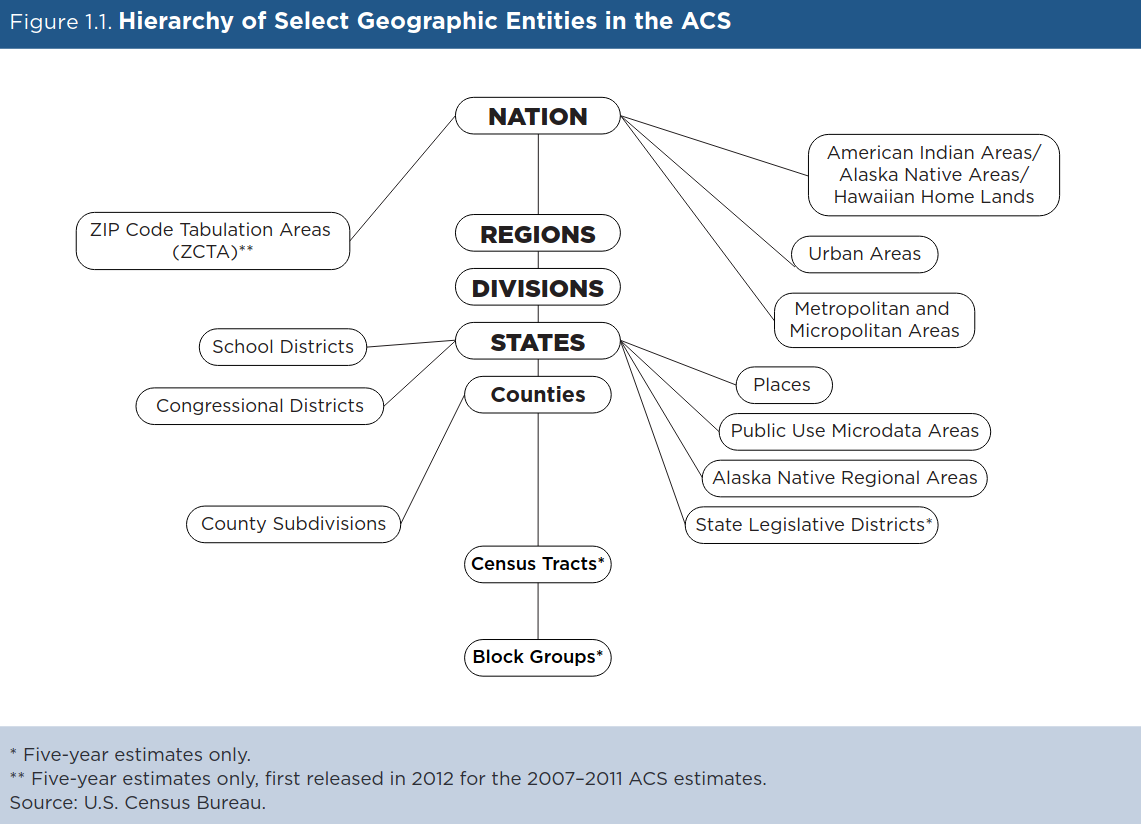Overview of U.S. census data
📥 Click here to download this document and any associated data and images
This section will cover:
- basics of the U.S. census
- census geographies
- how to download census data
In the U.S., the U.S. Census Bureau is responsible for conducting the census every ten years. The last decennial census was conducted in 2020. The census is intended to count every person in the U.S. and U.S. territories. It covers a relatively short set of questions, including basic demographic information such as age, sex, race, Hispanic origin, and owner/renter status.
The Census Bureau also conducts additional surveys and programs. One of the most commonly used is the American Community Survey (ACS), which is an annual demographics survey that covers a much wider range of questions typically not included in the full census, such as education, employment, internet access, or transportation. It is important to remember that the ACS is sent to a sample of about 3.5 million household addresses every year. As such, the ACS is reported in estimates for different time periods, most typically 1-year, 3-year, and 5-year periods. For example, you can use the 2013-2018 5-year ACS estimates to describe demographic characteristics for 2018.
To learn more about the Census, check out these two video series by the U.S. Census Bureau:
Census geographies
As you begin using census data, you will also want to learn more about the different census geographies. Here is an overview of select geographic entities commonly used in the ACS and how they relate to each other. For city or regional-level analyses, commonly used geographies include Counties, Places (which often overlap with a city boundary), Census Tracts, and Census Block Groups.

The pygris Python package allows you to easily access census geographic data in spatial format. To learn how to use it, read through the package’s documentation.
How to download census data
For beginners looking to get started with exploring, downloading, or using the census and ACS data, check out these tutorials:
For more advanced users, or those seeking to access the ACS programmatically, the Census Bureau API webpage (Application Programming Interface) provides an easy way to search and download data more efficiently:
If you’re familiar with the R programming language, check out the tidycensus package, which allows you to download census data via the API. See the documentation for more information.
Finally, note that certain universities and institutions also provide their students or employees access to Social Explorer, a very user-friendly platform for downloading and visualizing Census data. It’s worth looking into whether your organization would provide you with an account!